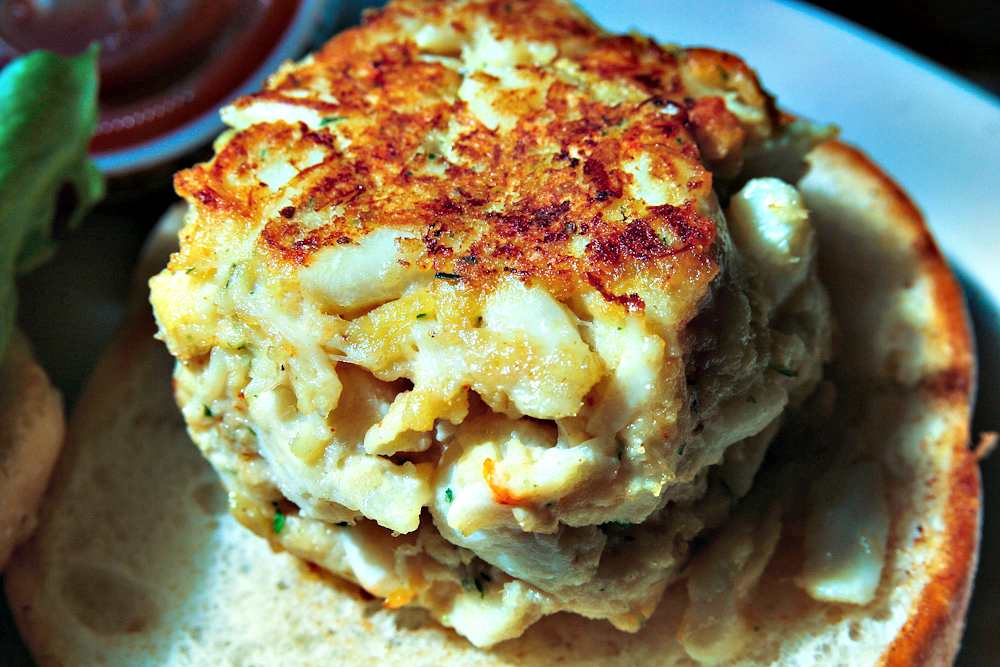When it comes to classic American seafood fare, few can hold a candle to the rich taste and culinary history of Baltimore crab cakes. Reputed for abundant use of fresh blue crab flesh and little filler, these delectables are a source of Maryland coastal food pride and must-try treat for seafood aficionados worldwide.

Whether you’re planning a visit to Charm City or simply want to bring a taste of the Chesapeake Bay into your kitchen, this article dives into the history, preparation, variations, and tips for making the perfect Baltimore-style crab cakes.
The Origin of the Baltimore Crab Cake
Crab cakes have their origins in Native American and early colonial East Coast seafood dishes, but it was the city of Baltimore, Maryland that mastered the delicacy of making crab cakes with local blue crabs fished from the Chesapeake Bay.
Historically served in restaurants, seafood shacks, and home kitchens as well, Baltimore crab cakes gained notoriety for their meaty consistency, subtle seasonings, and dependence on high-quality crab meat — namely lump or jumbo lump crab.
In contrast to imitation varieties filled with breadcrumbs and spices, authentic Baltimore crab cakes emphasize the natural sweetness of the crab.
What Sets Baltimore Crab Cakes Apart?
Their secrets are simplicity and good ingredients. Good Baltimore crab cakes are:
Crabbed up: usually 90% or more all-natural lump or jumbo lump crab.
Not filled to the brim: just enough breadcrumbs or ground crackers to provide cohesion.
Balanced, not dominated: tried-and-true seasonings: Old Bay, Dijon mustard, a dash of Worcestershire.
Pan-fried or broiled: Instead of deep-frying, Baltimore crab cakes are often cooked gently to preserve their delicate structure.
Ingredients: What You’ll Need
Here’s a traditional list of ingredients for classic Baltimore crab cakes:
1 pound jumbo lump crab meat (fresh or pasteurized)
⅓ cup mayonnaise
1 large egg
1 teaspoon Dijon mustard
1 teaspoon Worcestershire sauce
1½ teaspoons Old Bay seasoning
1 tablespoon lemon juice
¼ cup finely chopped parsley or green onion (optional)
½ cup saltine crackers or breadcrumbs crushed
Butter or oil for frying
Step-by-Step Recipe: How to Make Baltimore Crab Cakes
Step 1: Make the Binding Mix
In a large bowl, whisk the mayonnaise, egg, mustard, Worcestershire sauce, lemon juice, and Old Bay seasoning together.
Step 2: Fold in the Crab Meat gently
Stir in the crab meat and fold gently to mix. Don’t overmix — you’re trying to preserve the lump meat for that classic texture.
Step 3: Add the Filler
Fold in the crushed crackers or breadcrumbs just until the mixture is cohesive. Add more if necessary, but sparingly.
Step 4: Form the Cakes
Portion the mixture into 6–8 amounts and form patties. Lay on a tray, cover, and refrigerate for a minimum of 30 minutes. This keeps the cakes firm while being cooked.
Step 5: Cook
Heat some butter or oil in a skillet over medium heat. Brown and heat through the crab cakes for 4–5 minutes per side. Alternatively, you can broil them for 10–12 minutes, turning halfway through.
Step 6: Serve
Serve hot with lemon wedges, tartar sauce, or remoulade. A side of coleslaw, corn on the cob, or fries completes the meal.
Tips for Crab Cake Success
Use fresh crab meat whenever available. If using canned or pasteurized, select a reliable source and drain thoroughly.
Avoid overmixing the mixture. The secret is to have the texture light and the crab meat in chunks.
Refrigerate before cooking. It aids in binding the mixture and does not fall apart when cooked in the pan.
Broil for a healthier choice. Although pan-frying produces a crispy edge, broiling works well with less fat.
Variations to Try
While Baltimore crab cakes are traditional, you can spice things up:
1. Spicy Crab Cakes
Add minced jalapeños, hot sauce, or cayenne pepper to give them some oomph.
2. Gluten-Free Crab Cakes
Substitute gluten-free breadcrumbs or almond flour as a filler.
3. Mini Crab Cakes
Create smaller patties for appetizers or party snacks — excellent with a dipping sauce.
4. Crab Cake Sandwich
Top crab cakes on a brioche bun with lettuce, tomato, and spicy mayo for a fan-friendly sandwich.
Nutritional Snapshot
An average Baltimore crab cake is rich in protein, comparatively low in carbs (provided you omit the heavy fillers), and features healthy omega-3 fatty acids from the crab. But it can also contain mayonnaise and butter, so portion control is important to those counting calories.
Why Baltimore Loves Its Crab Cakes
In Baltimore, crab cakes are not just a meal — they’re a source of civic pride. Recipes have been passed down through generations of families, and seafood restaurants will fight to serve the city’s best. Whether you’re eating them at Faidley’s Seafood in Lexington Market or cooking them from scratch at home, you’re enjoying a dish that is deeply ingrained in Maryland’s culture.
Final Thoughts
Baltimore crab cakes are a genuine treasure of American coastal cooking. They’re sophisticated enough for company but simple enough for a weeknight dinner. With their deep flavor, flaky texture, and simple ingredient list, these cakes are a testament to the fact that sometimes, less really is more.
Give them a try at home — and once you’ve tasted the genuine article, you’ll see why crab enthusiasts nationwide swear by the Baltimore method.

Leave a Reply